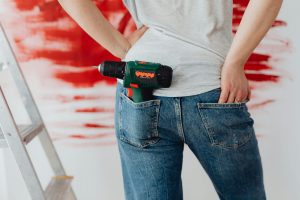Post-Plastic Packaging: Mycelium Wrap Dissolving in Home Compost
The world is facing a plastic crisis. With over 300 million tonnes of plastic being produced every year, there is no denying that plastic has become an integral part of our daily lives. From food packaging to household items, plastic has found its way into almost every aspect of our existence. But with no efficient way to recycle or dispose of plastic, we are left with a mounting problem. Thankfully, researchers have been looking into sustainable alternatives, and one such innovation is mycelium wrap – a packaging material that dissolves in home compost.
What is Mycelium Wrap?
Mycelium wrap, also known as mushroom packaging, is made from fungus mycelium – the network of thread-like cells that forms the root structure of mushrooms. It is created by combining mycelium with agricultural waste such as corn husks and wheat bran. The mixture is then placed in molds and allowed to grow and form a durable and lightweight material that can be used for packaging.
Why is Post-Plastic Packaging Important?
The term “post-plastic” refers to materials and processes that aim to reduce or eliminate the use of plastic in packaging. This is important because plastic poses a significant threat to the environment. It takes hundreds of years for plastic to decompose, and when it does, it releases toxic chemicals into the soil and water, harming plants, animals, and humans. Additionally, plastic production releases greenhouse gases, contributing to climate change.
Benefits of Mycelium Wrap
Biodegradable and Compostable
Mycelium wrap is biodegradable, meaning it will decompose naturally without leaving behind any harmful residues. It takes only a few weeks for mycelium wrap to break down completely, making it a much more sustainable option compared to plastic, which can take hundreds of years to decompose.
What’s more, mycelium wrap is not just biodegradable; it is also compostable. This means that when it breaks down, it turns into a nutrient-rich material that can be used as fertilizer for plants, making it a closed-loop system that benefits the environment.
Durable and Flexible
Despite being biodegradable, mycelium wrap is surprisingly strong and durable. It has a similar strength-to-weight ratio as plastic, making it a suitable alternative for packaging fragile items. It is also highly flexible, allowing it to be molded into different shapes and sizes, making it suitable for various types of packaging needs.
Eco-Friendly and Low-Carbon Footprint
The production of mycelium wrap requires significantly less energy and emits fewer greenhouse gases compared to plastic. This is because the raw materials used for mycelium wrap are abundant and easily accessible, reducing the need for energy-intensive processes like plastic production. Additionally, mycelium wrap production can be done locally, reducing the carbon footprint of transportation.
How Mycelium Wrap Dissolves in Home Compost
One of the most significant benefits of mycelium wrap is that it dissolves in home compost. This means that you can dispose of it in your home compost bin, and it will break down into compost with all of its nutrients intact. Here’s how it works:
Step 1: Cut and Soak
To start the composting process, you can either cut the mycelium wrap into smaller pieces or let it break down on its own. You can also soak it in water to speed up the process slightly.
Step 2: Add to Compost Bin
Once the mycelium wrap is cut or soaked, add it to your home compost bin, along with other organic materials such as kitchen scraps and garden waste.
Step 3: Keep Moist
It is essential to keep the compost moist, as mycelium wrap requires moisture to dissolve. If your compost bin is too dry, add a bit of water to it. The mycelium wrap will take a few weeks to break down completely, so be patient.
Step 4: Use Compost as Fertilizer
After a few weeks, your compost will be ready to use as fertilizer for your plants. Simply spread the compost around your plants to provide them with essential nutrients and help them grow stronger and healthier.
The Future of Packaging
Mycelium wrap is just one of many sustainable alternatives to plastic packaging that researchers are exploring. With its environmental benefits and ability to dissolve in home compost, it’s no surprise that this innovative material is gaining popularity in the packaging industry. As consumers become more aware of the environmental impact of plastic, the demand for post-plastic packaging, like mycelium wrap, will continue to increase, driving the shift to a more sustainable future.
The use of mycelium wrap in packaging is a significant step towards reducing the environmental damage caused by plastic. By choosing to use mycelium wrap, not only are you helping the planet, but you are also supporting the shift towards a circular economy. It’s time to ditch the plastic and embrace sustainable packaging – the mycelium wrap way.











